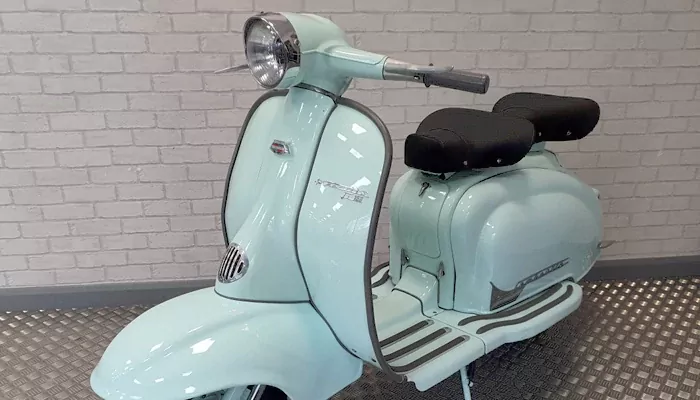
Royal Enfield was India's first step into the world of two-wheelers, but it was a scooter that gave the Indian two-wheeler industry a genuine push.
Whenever people discuss India's automobile history, they begin with either the Ambassador or the Royal Enfield. In another article of the 'India On Wheels' series, we focus on a particular two-wheeler that doesn't get enough credit. Credit goes to Royal Enfield, and no harm was done there, but when it came to being the vehicle of the masses, it was this scooter that initially became part of Indian family garages.
Royal Enfield was the first Indian motorcycle, but it was meant for military use. As far as civilians are concerned, the expensive tag of the motorcycle made it an exclusive ride for the elites. Not everybody wanted a 350cc heavy drinker, which was pricier in everyday pockets.
That's when Automobile Products of India (API) entered the two-wheeler market with the idea of selling Lambretta, a scooter from Italy produced by Innocenti S.A. API started with a 48cc Lambretta (a moped) that was assembled in India and quickly became a hit due to its affordable pricing compared to the Enfield.

API did not produce only the 48cc Lambretta. The Indian scooter-assembling company also acquired the licence to assemble the 150cc Li150 series 2 model, which was sold as Lambretta until 1976. However, due to some legal issues, the name had to be changed from Lambretta to Lamby in India. Even the Lambretta TV 175 was sold as the Mac 175 in India.

Back in the day, social media marketing did not exist, and brands only had the option of advertising in the papers. Televisions weren't a common household thing in India either. Fortunately, the Lambretta found a place in multiple Bollywood movies, which allowed it to reach a huge number of audiences.
Before the 1980s, Lambretta had little to no competition, as makers like Bajaj and LML did not exist. However, that would change in the 1980s, bringing Lambretta's sales figures down. Not to forget, the Lambretta was a bulky-looking scooter called a 'Dad's vehicle'; therefore, it did not appeal to the youth.
Lambretta's number took a hit when Bajaj and LML entered the market with Chetak, Sunny, Vespa, and other lightweight scooters. The company couldn't keep up with the new-gen scooters, and the Lambretta was phased out from the Indian market in 1980.
Today, even the best new-gen automobile enthusiasts do not possess the knowledge of this iconic scooter, which laid the foundation for mass two-wheelers in the Indian market. Bajaj Chetak and LML Vespa may be considered legends of the Indian two-wheeler industry, but the Lambretta will forever remain the OG scooter of the nation